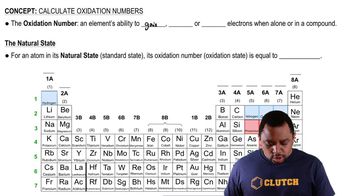Here are the essential concepts you must grasp in order to answer the question correctly.
Oxidation States
Oxidation states, or oxidation numbers, indicate the degree of oxidation of an atom in a compound. They are assigned based on a set of rules, reflecting the number of electrons an atom gains, loses, or shares when forming chemical bonds. Understanding oxidation states is crucial for predicting the behavior of elements in reactions, especially in redox processes.
Recommended video:
Group 3A Elements
Group 3A elements, also known as Group 13 in the periodic table, include boron (B), aluminum (Al), gallium (Ga), indium (In), and thallium (Tl). These elements typically exhibit a range of oxidation states, but they commonly have a +3 oxidation state due to the loss of three valence electrons. This characteristic is important for understanding their chemical reactivity and bonding patterns.
Recommended video:
Group 3A vs. Group 2A Elements
Trends in the Periodic Table
The periodic table displays trends in elemental properties, including oxidation states, as you move across periods and down groups. For Group 3A elements, the +3 oxidation state is predominant, but as you move down the group, heavier elements may also exhibit +1 oxidation states due to the inert pair effect. Recognizing these trends helps predict the behavior of elements in various chemical contexts.
Recommended video:
 Verified step by step guidance
Verified step by step guidance


